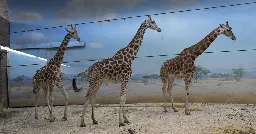Zoos aren’t for animals. They’re for us. | Zoos say they’re leaders in protecting wildlife. But is it true?
Zoos aren’t for animals. They’re for us. | Zoos say they’re leaders in protecting wildlife. But is it true?

www.vox.com
Zoos aren’t for animals. They’re for us.

